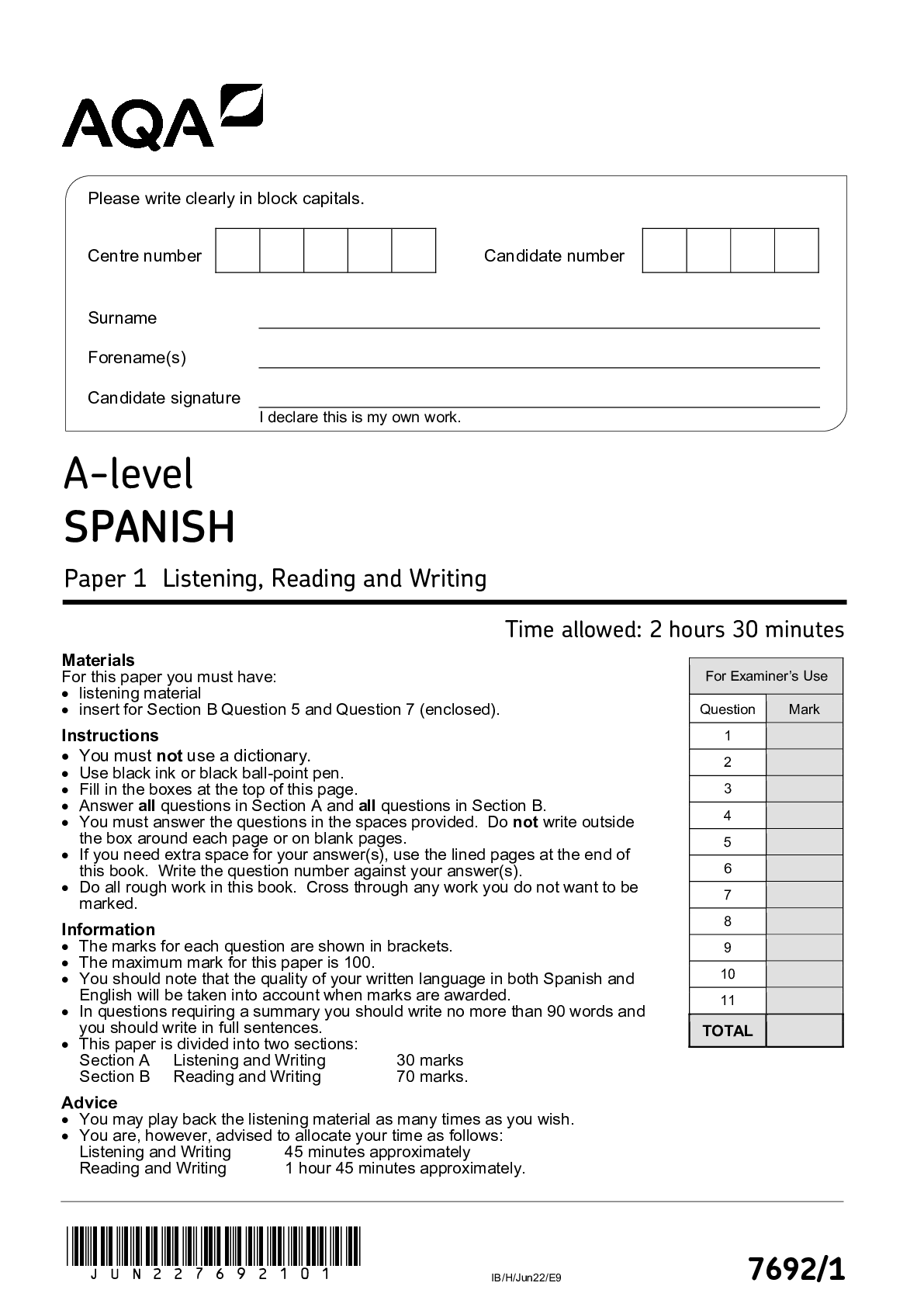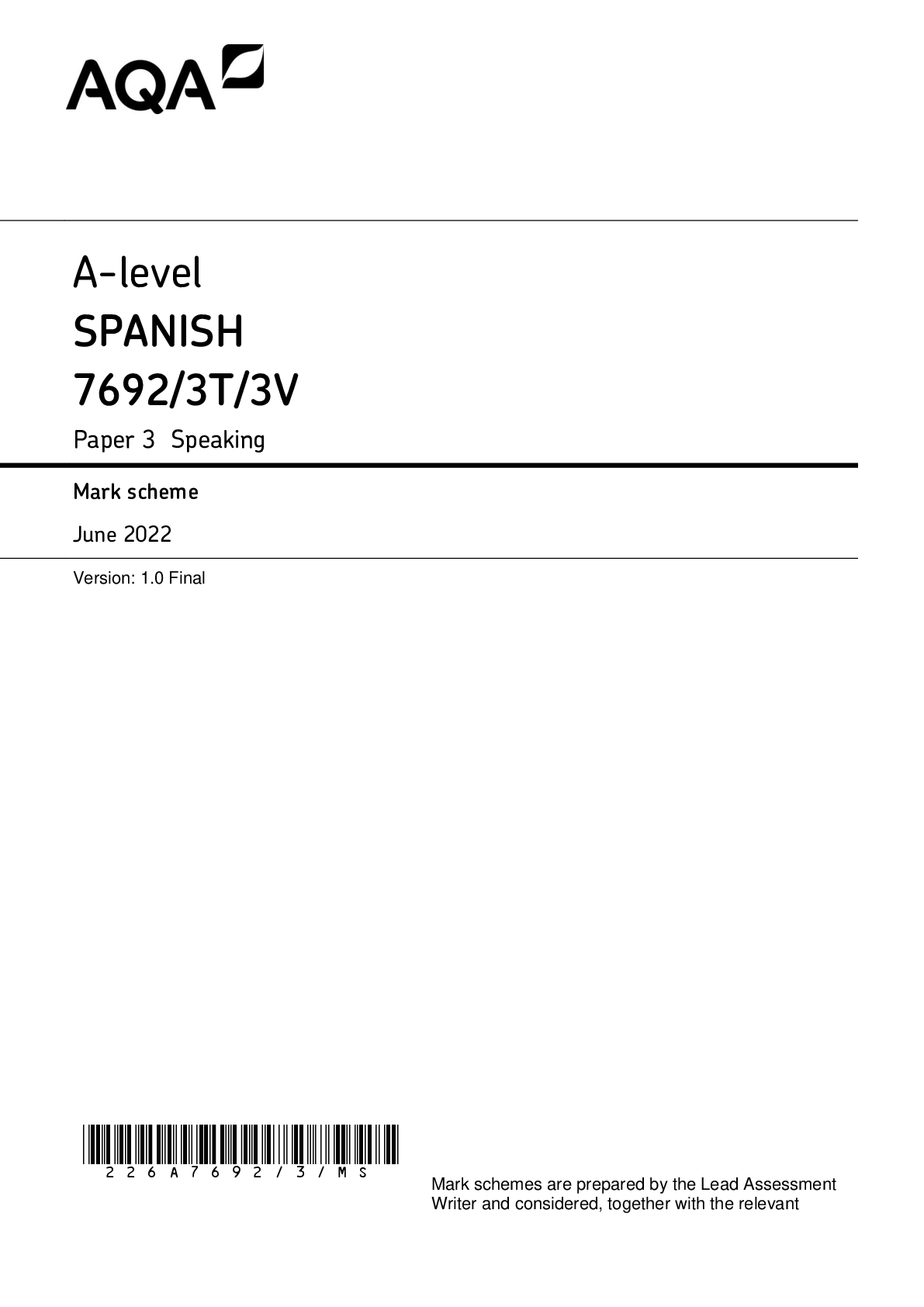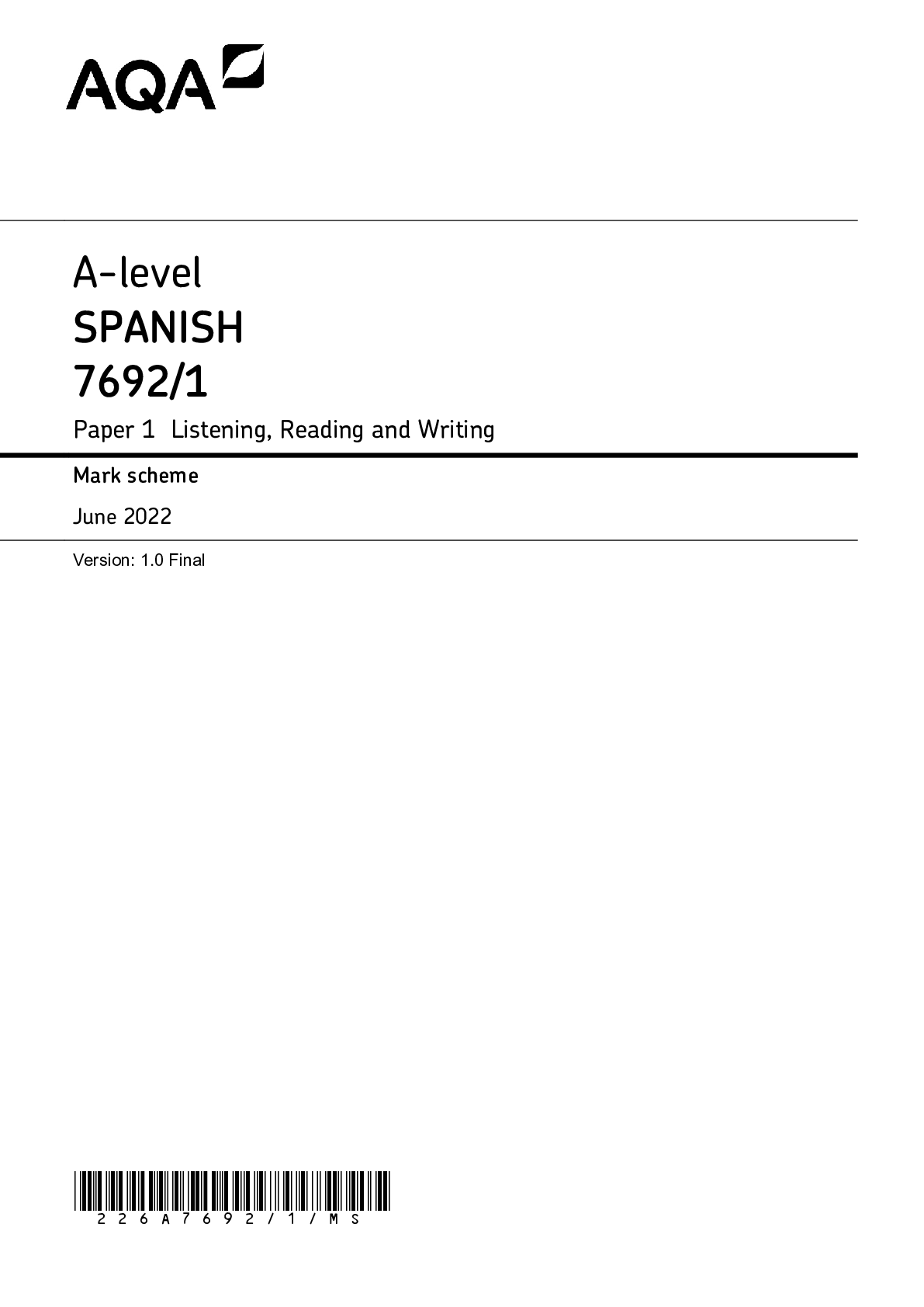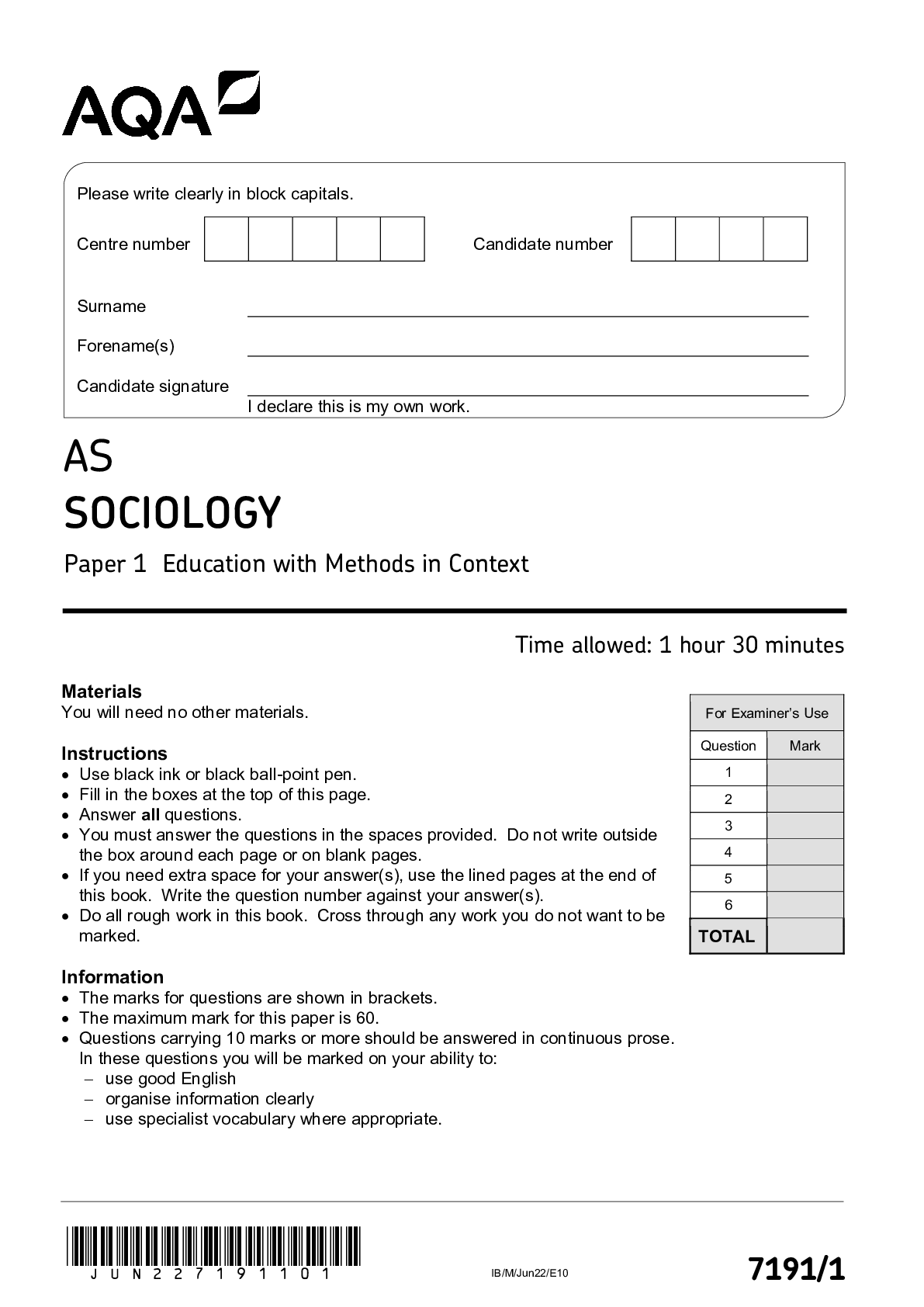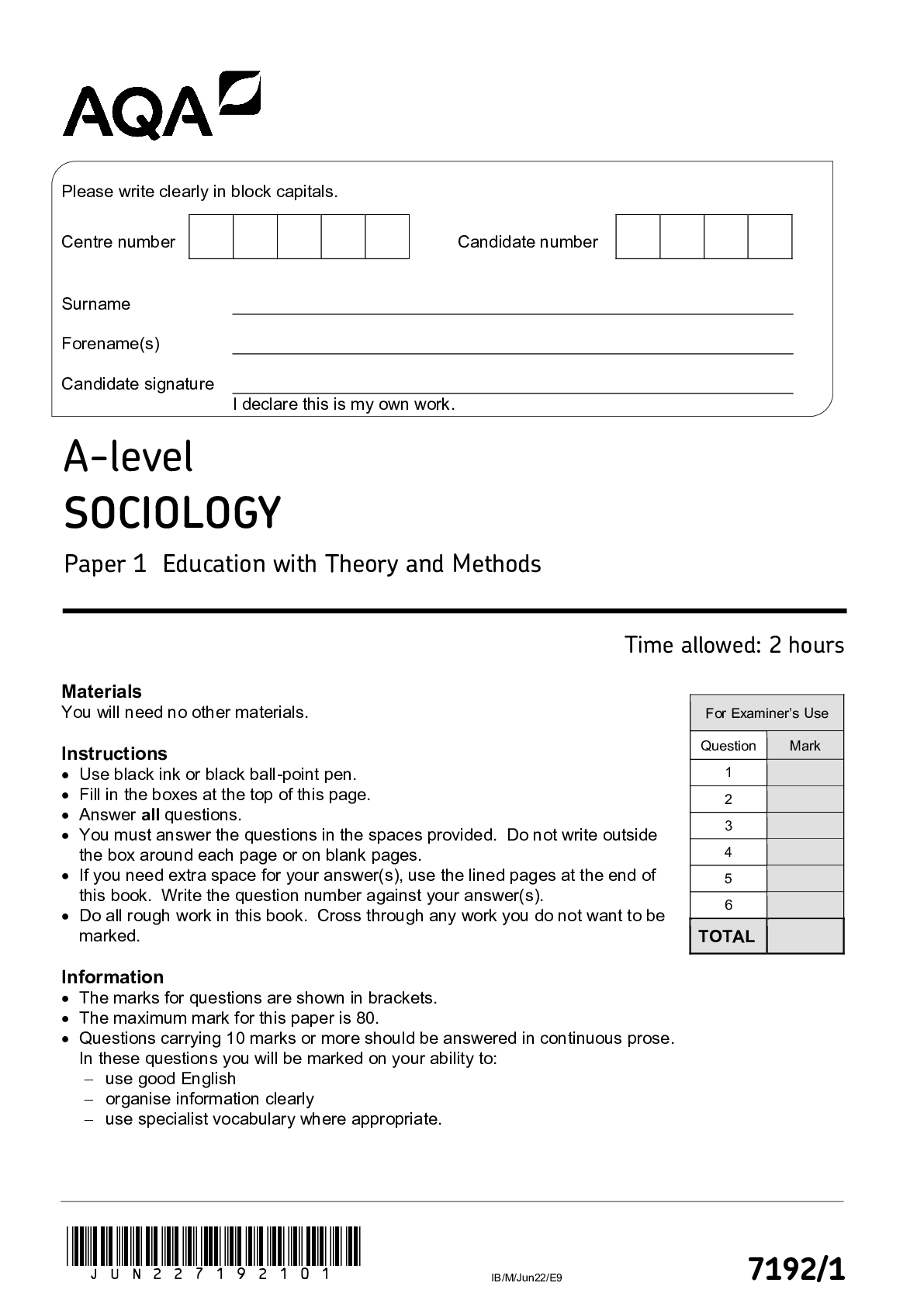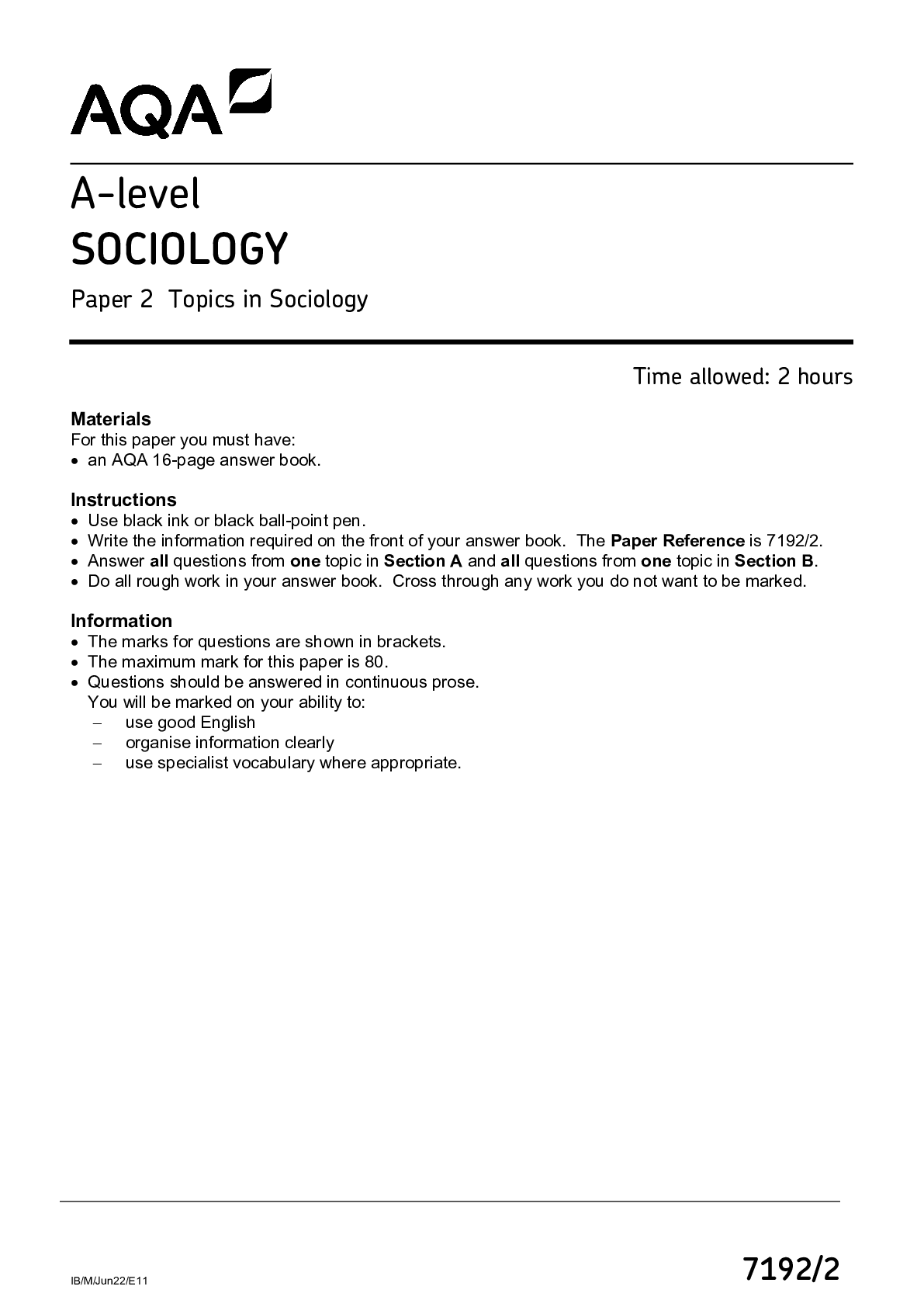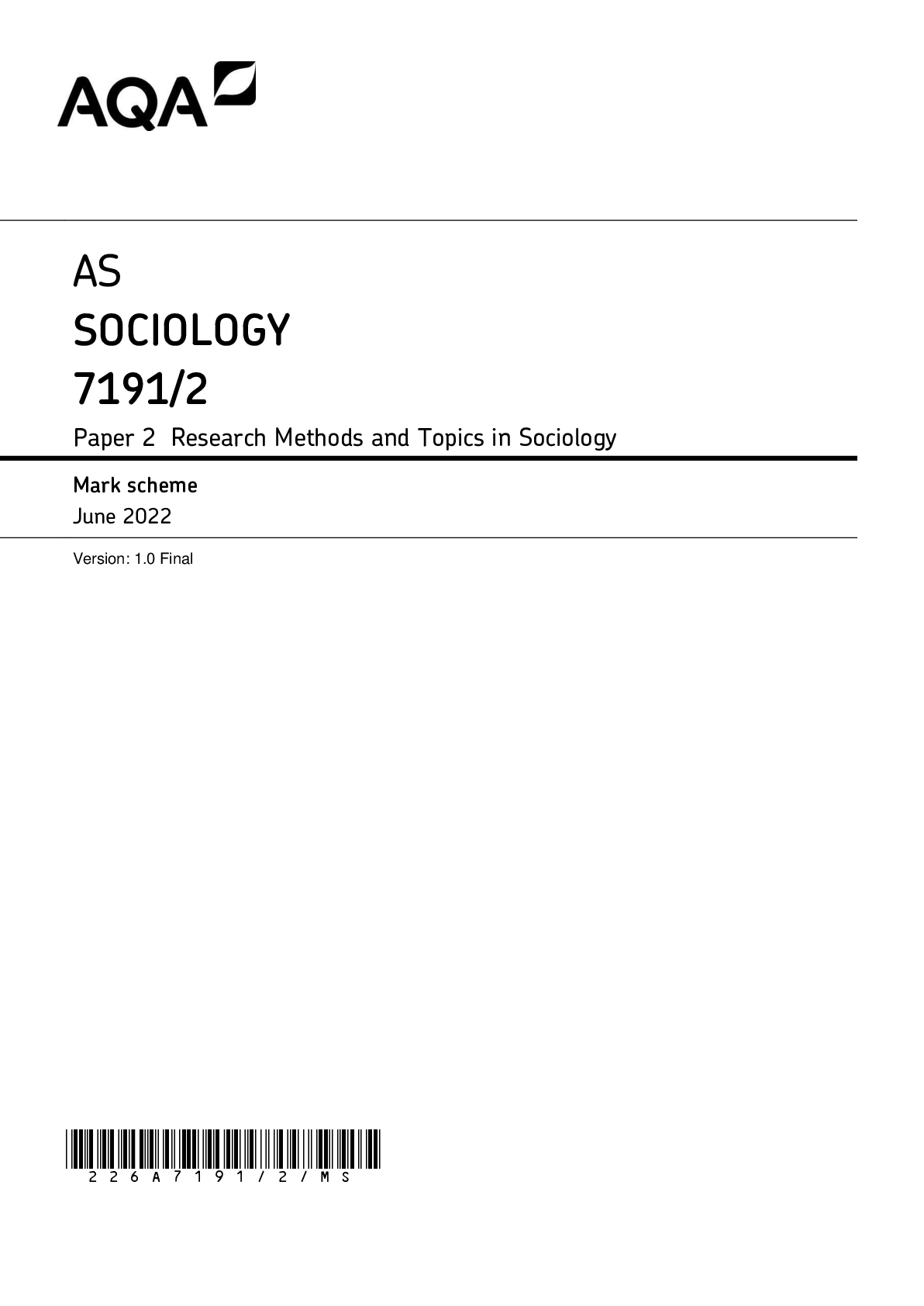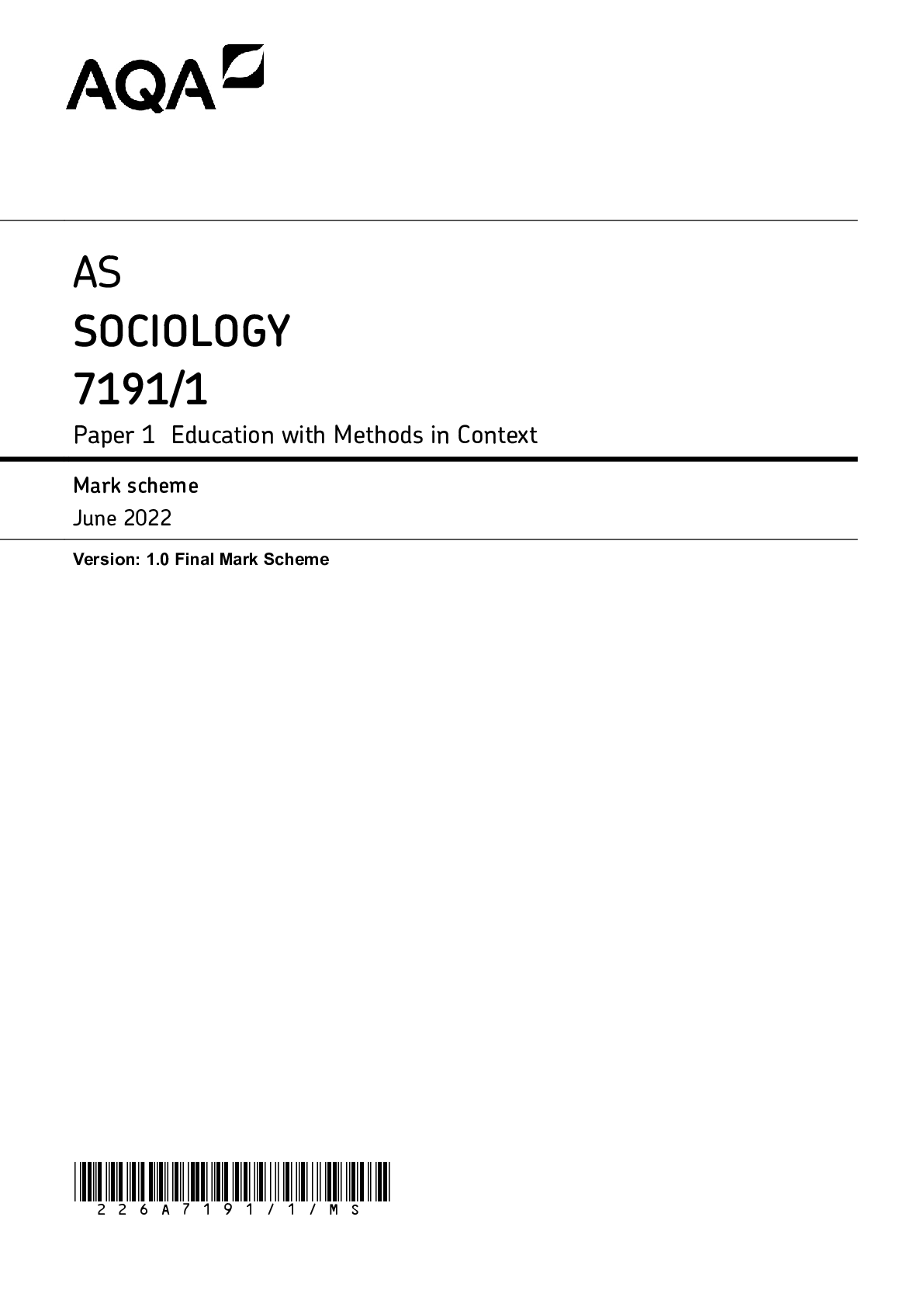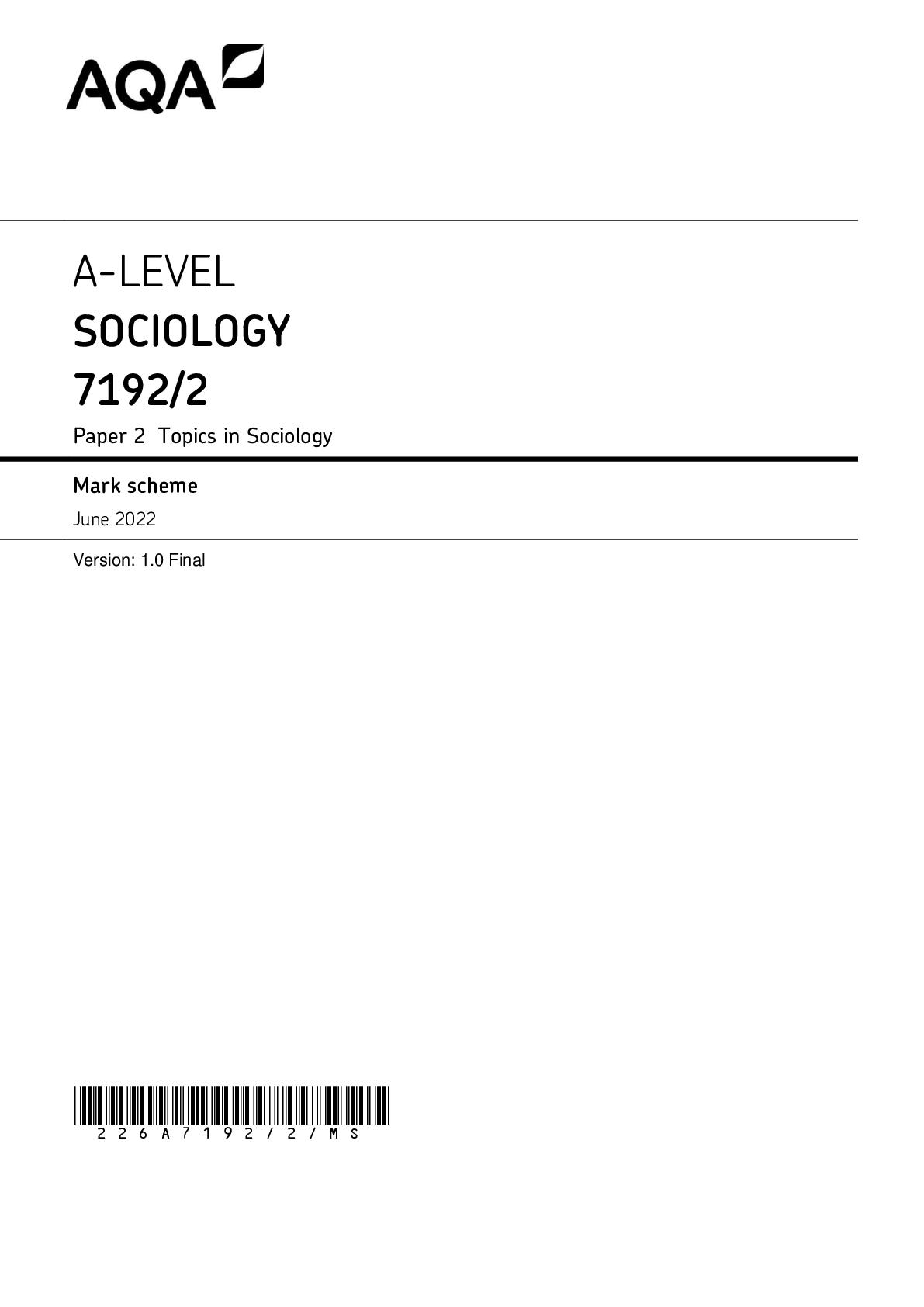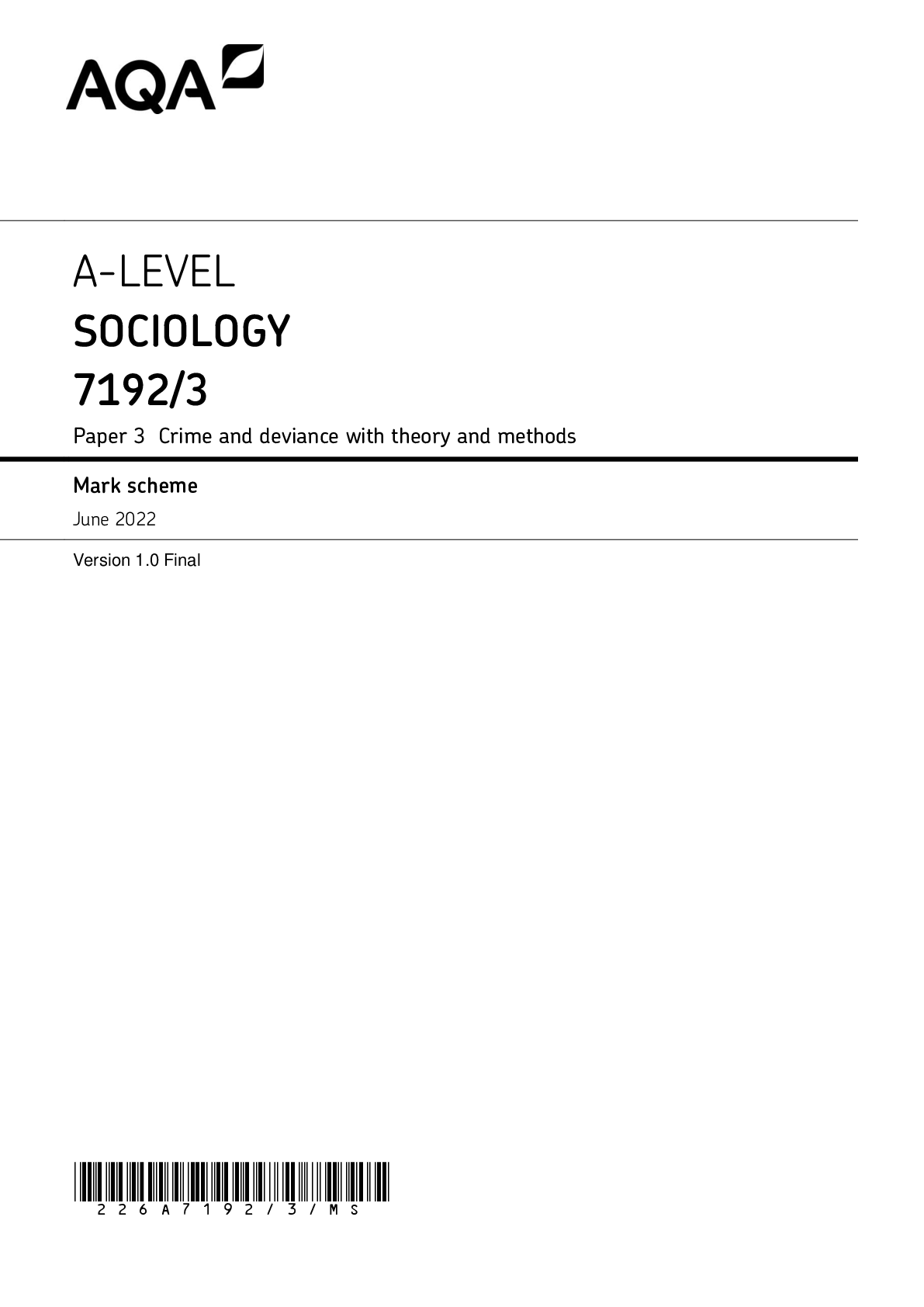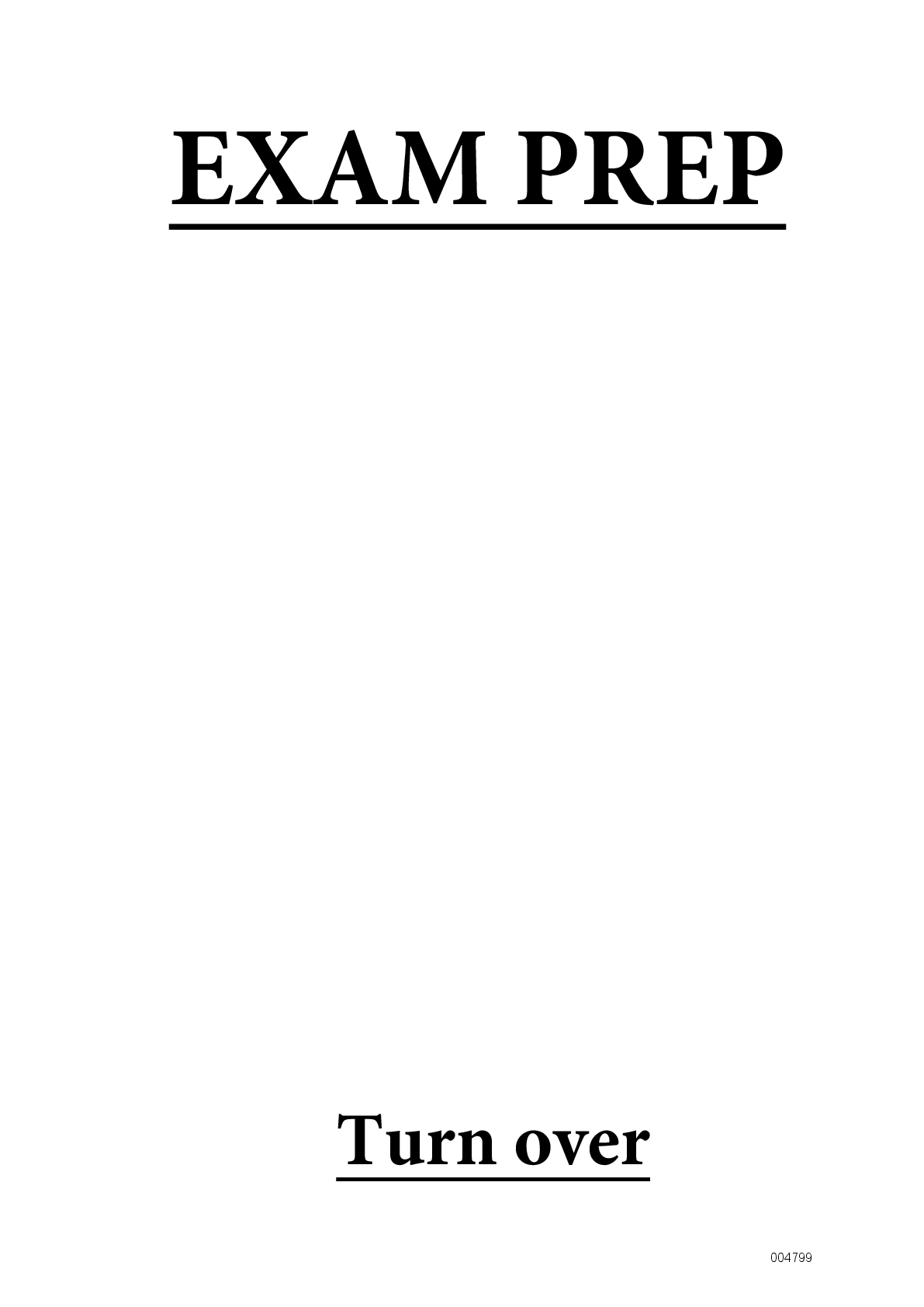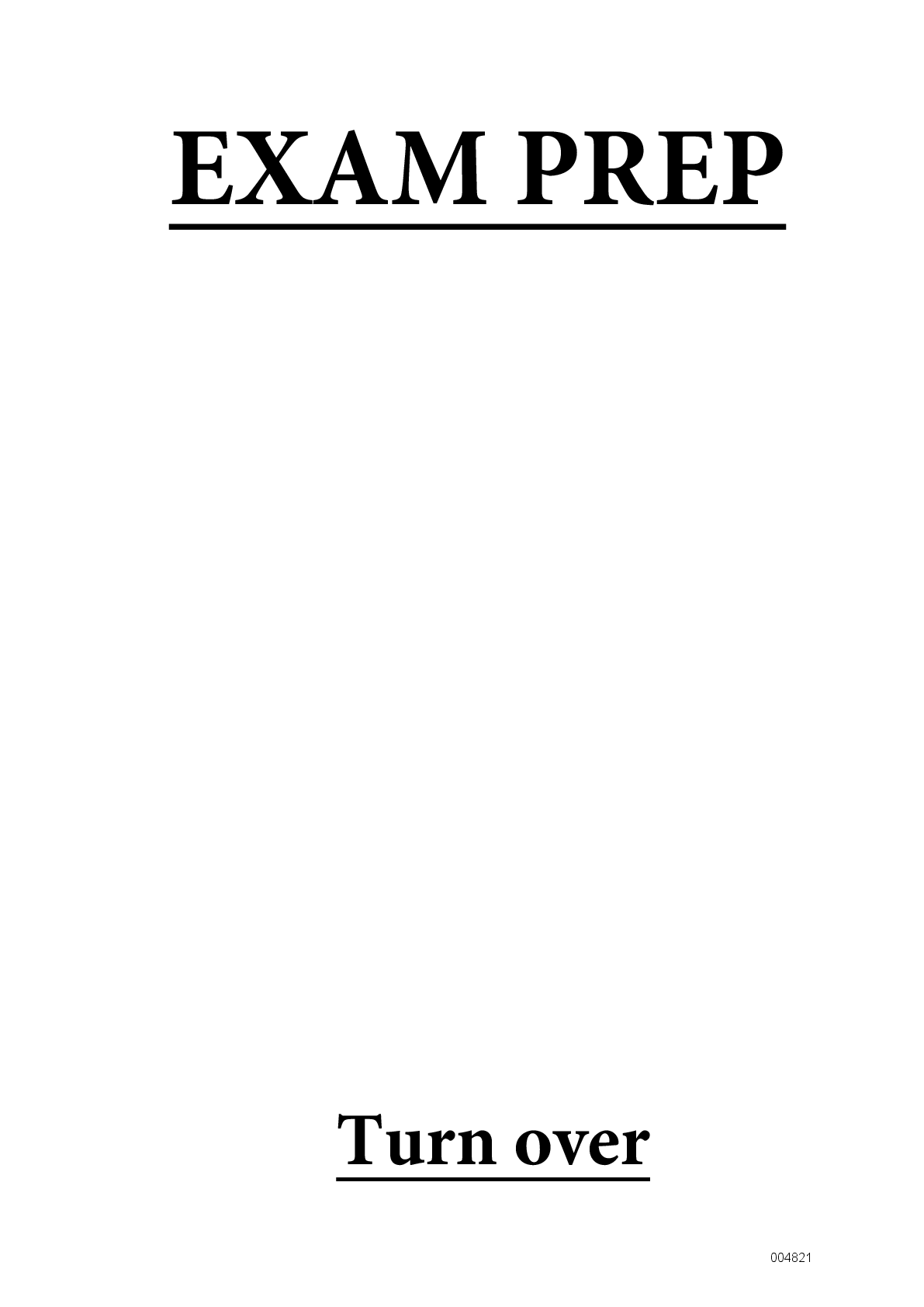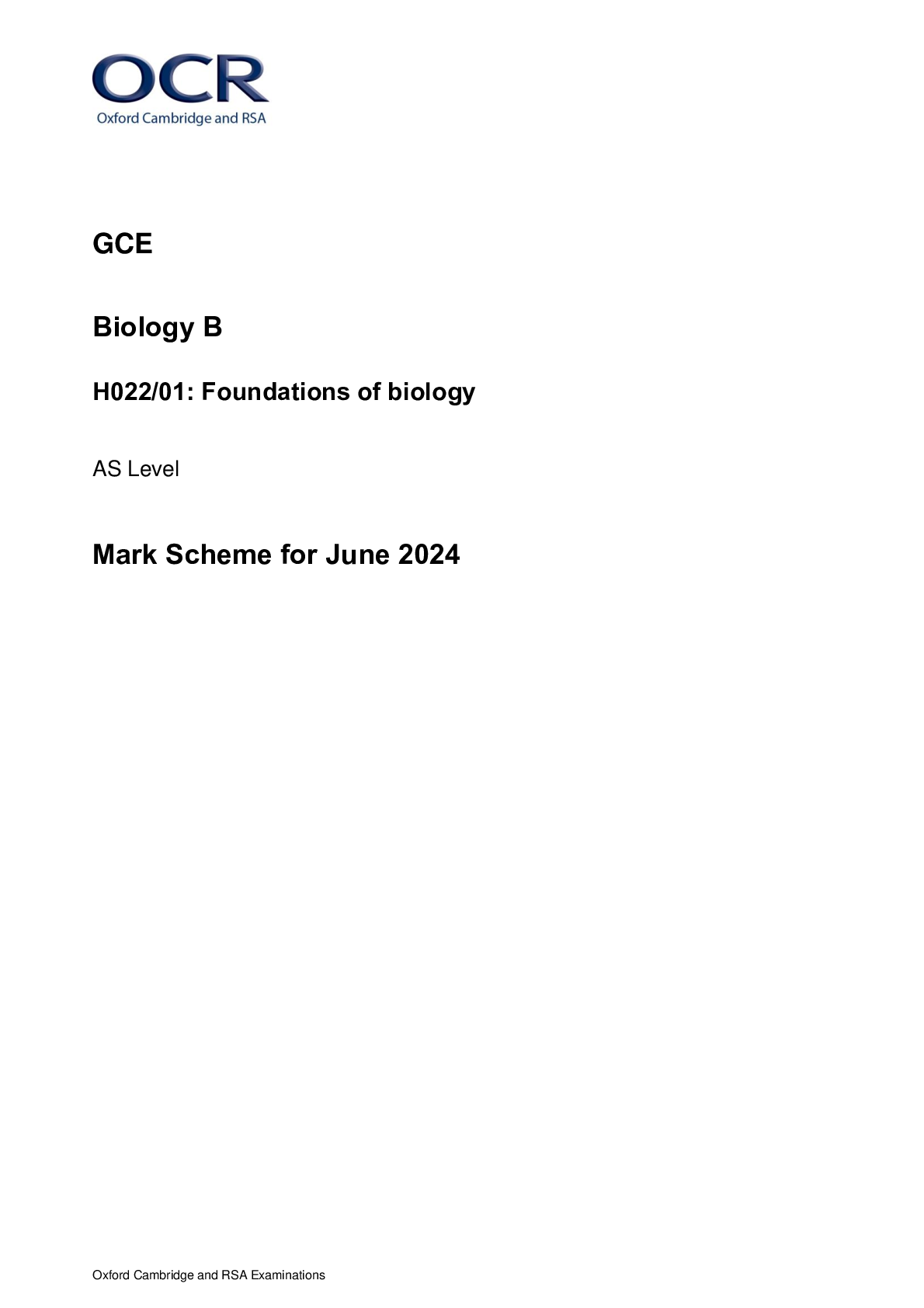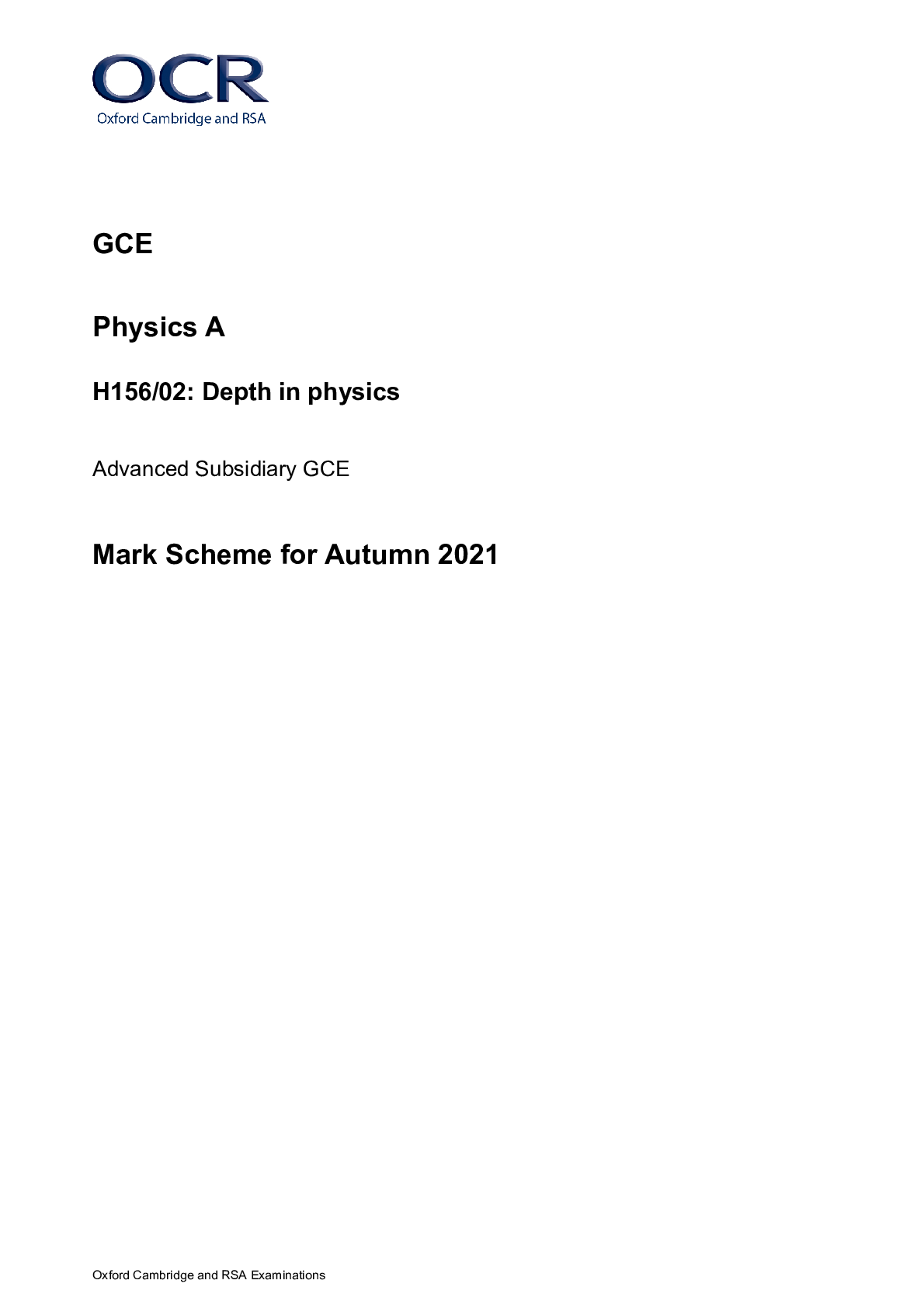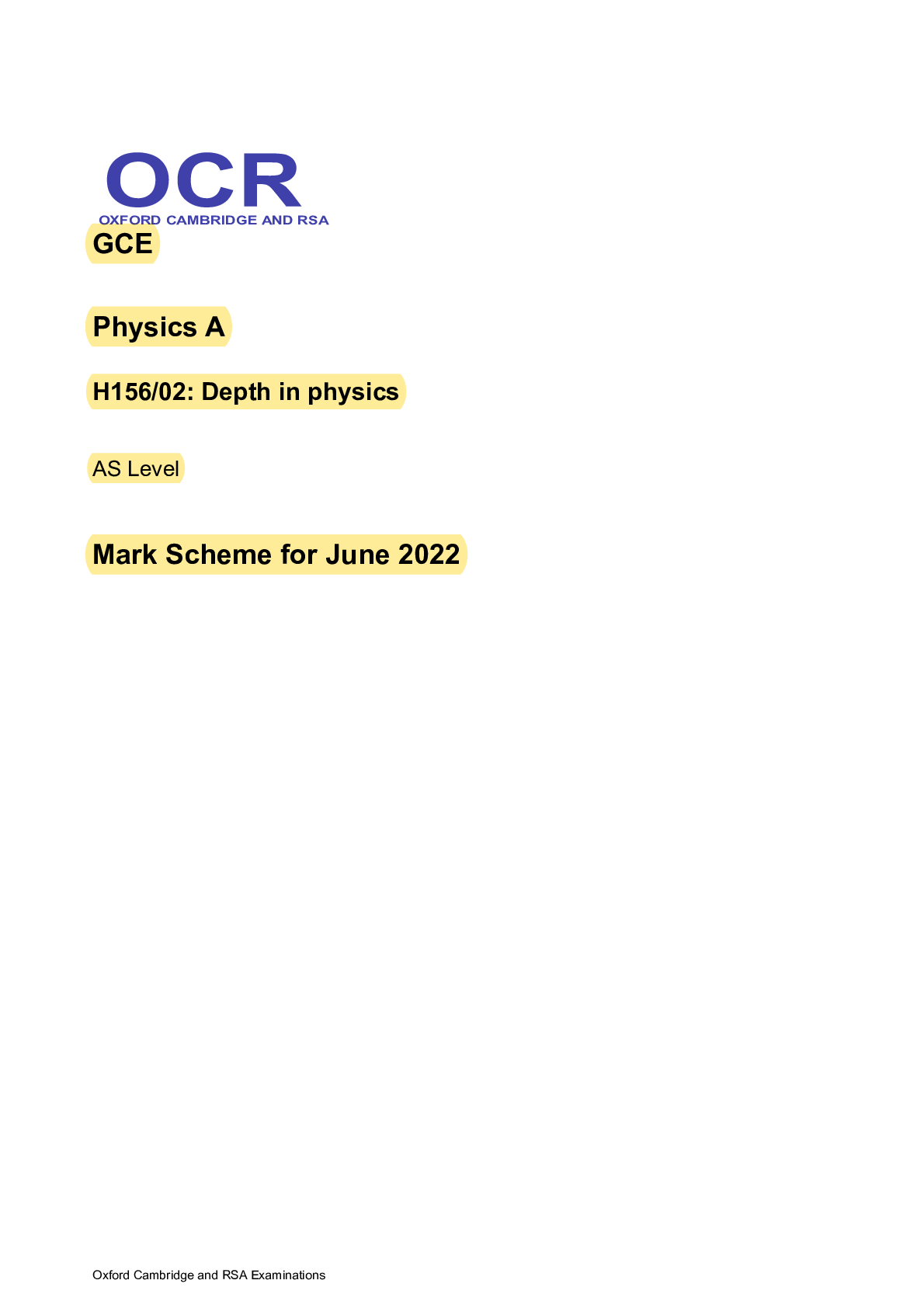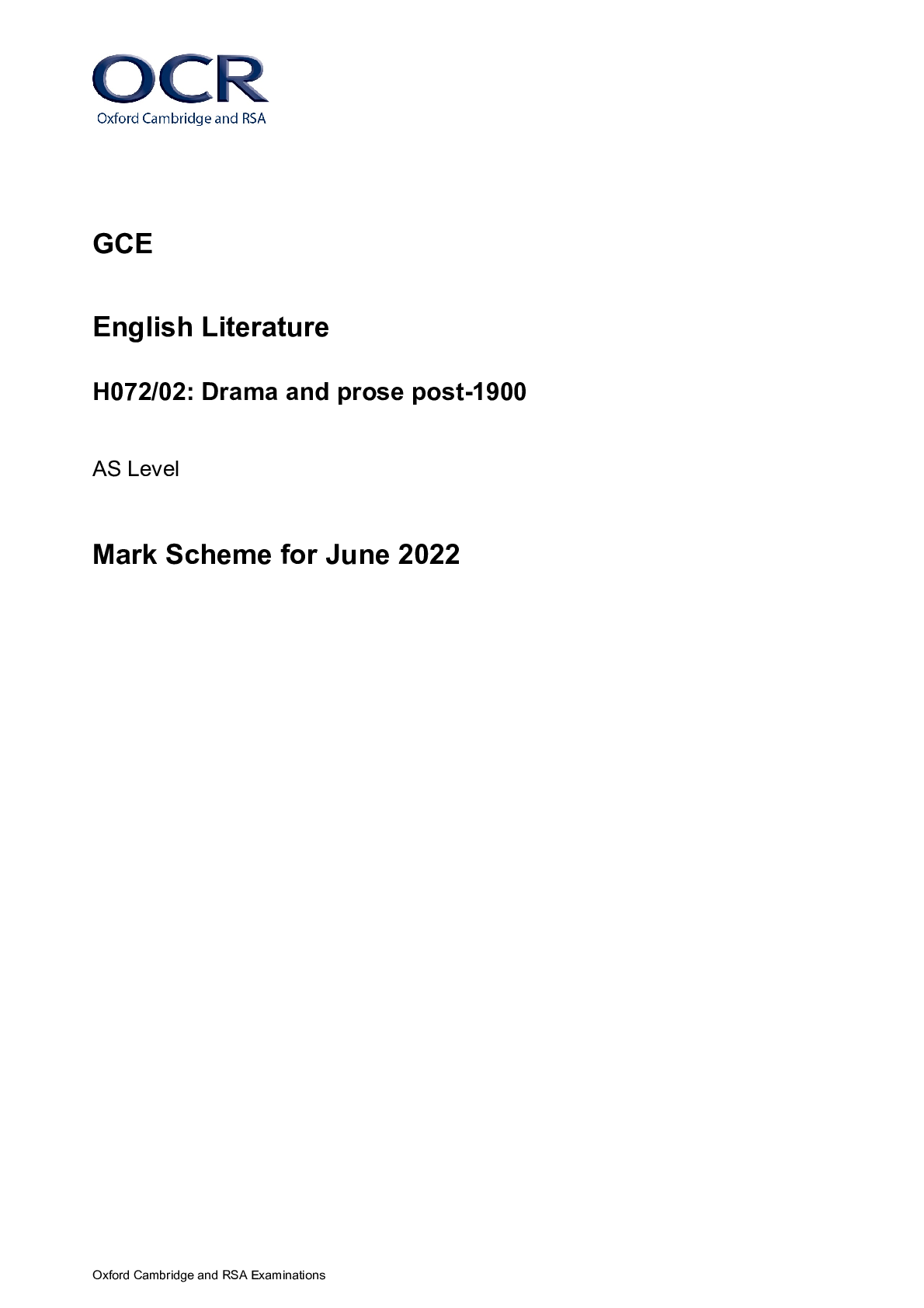Physics > AS Level Mark Scheme > AS PHYSICS Paper 1. AQA TOP NOTCH (All)
AS PHYSICS Paper 1. AQA TOP NOTCH
Document Content and Description Below
Materials For this paper you must have: • a pencil and a ruler • a scientific calculator • a Data and Formulae Booklet • a protractor. Instructions • Use black ink or black ball-point ... pen. • Fill in the boxes at the top of this page. • Answer all questions. • You must answer the questions in the spaces provided. Do not write outside the box around each page or on blank pages. • If you need extra space for your answer(s), use the lined pages at the end of this book. Write the question number against your answer(s). • Do all rough work in this book. Cross through any work you do not want to be marked. • Show all your working. Information • The marks for questions are shown in brackets. • The maximum mark for this paper is 70. • You are expected to use a scientific calculator where appropriate. • A Data and Formulae Booklet is provided as a loose insert. Please write clearly in block capitals. Centre number Candidate number Surname Forename(s) Candidate signature I declare this is my own work. AS PHYSICS Paper 1 Time allowed: 1 hour 30 minutes 2 *02* IB/M/Jun22/7407/1 Do not write outside the Answer all questions in the spaces provided. box 0 1 A sigma-plus (Σ+ ) particle and an unidentified particle Y are produced by the strong interaction between a positive pion (π+) and a proton (p). This interaction is represented by the equation: π+ + p → Σ+ + Y 0 1 . 1 Complete Table 1 to show the baryon number B, charge Q and strangeness S for the particles in this interaction. [2 marks] Table 1 π+ p Σ+ Y B 0 Q +1 +1 +1 S +1 0 1 . 2 Which particle in Table 1 has the quark structure uus? Tick () one box. [1 mark] π+ p Σ+ Y 3 *03* Turn over ► IB/M/Jun22/7407/1 Do not write outside the 0 1 box . 3 Deduce which particle, π+ or Y, has the greater charge-to-mass ratio. Justify your conclusion. [3 marks] Turn over for the next question 6 4 *04* IB/M/Jun22/7407/1 Do not write outside the 0 2 A box sample of bromine gas contains a mixture of two isotopes. An experiment is done to find the percentage of each isotope in this sample. 0 2 . 1 In the experiment, the gas is ionised by a beam of electrons. Explain how the beam of electrons causes a particle of the gas to have a charge of +1e. [2 marks] The gas consists of bromine molecules. Each molecule has two bromine atoms. The experiment finds that the bromine molecules contain 158, 160 or 162 nucleons. Figure 1 shows the percentage of these different molecules in the sample. Figure 1 5 *05* Turn over ► IB/M/Jun22/7407/1 Do not write outside the 0 2 box . 2 Bromine has a proton number of 35 The two isotopes in the sample have different nucleon numbers. Calculate the number of neutrons for the isotope that has the greater nucleon number. [2 marks] number of neutrons = 0 2 . 3 Deduce the percentage of each isotope in the gas. Justify your conclusion. [2 marks] Turn over for the next question 6 6 *06* IB/M/Jun22/7407/1 Do not write outside the 0 3 box A satellite system is used to measure the height h of the top of an ice sheet above the surface of the ocean. The satellite emits two pulses A and B of infrared radiation. A is incident on the surface of the ocean and B is incident on the top of the ice sheet as shown in Figure 2. Figure 2 0 3 . 1 The frequency of the infrared radiation is 3.8 × 1014 Hz. Each pulse has a duration of 6.0 ns. Calculate the number of cycles in each pulse. [2 marks] number of cycles = 0 3 . 2 A and B reflect and return to the satellite. The travel time is the time between the emission of a pulse and its return to the satellite. The difference in the travel times of A and B is 10.7 μs. Calculate h. [2 marks] h = m 7 *07* Turn over ► IB/M/Jun22/7407/1 Do not write outside the Some of the infrared radiation enters the ice sheet. box Figure 3 shows the path of infrared radiation that refracts at a sloping part of the ice sheet. Figure 3 0 3 . 3 Calculate the refractive index of the ice. [2 marks] refractive index = 0 3 . 4 Calculate the wavelength of the infrared radiation when it is inside the ice sheet. [2 marks] wavelength = m 8 8 *08* IB/M/Jun22/7407/1 Do not write outside the 0 4 box An isolated metal plate is given a negative charge. Electromagnetic radiation is incident on the plate. The plate loses its charge due to the photoelectric effect. 0 4 . 1 Discuss how the rate of loss of charge from the plate depends on the frequency and intensity of the incident radiation. In your answer you should explain why: • the plate loses its charge • the photoelectric effect occurs only for frequencies greater than a particular value • the rate of loss of charge increases with intensity for radiation above that particular value of frequency. [6 marks] 9 *09* Turn over ► IB/M/Jun22/7407/1 Do not write outside the box 0 4 . 2 Charged particles are emitted from the metal plate with a maximum kinetic energy of 1.1 eV when radiation of frequency 1.2 × 1015 Hz is incident on the plate. Calculate, in eV, the work function of the metal. [3 marks] work function = eV 9 10 *10* IB/M/Jun22/7407/1 Do not write outside the 0 5 box Figure 4 shows apparatus used to demonstrate the wave–particle duality of electrons. Figure 4 The heated filament emits slow-moving electrons. In region P, the electrons are accelerated to a high speed. At Q, the fast-moving electrons are incident on the graphite target. R is a point on one of the bright rings that are formed where the electrons strike the fluorescent screen. 0 5 . 1 The electrons demonstrate wave-like and particle-like behaviour as they travel from the filament to the screen. State and explain at which of P, Q or R the electrons are demonstrating wave-like behaviour. [2 marks] 11 *11* Turn over ► IB/M/Jun22/7407/1 Do not write outside the 0 5 box . 2 The apparatus is adjusted so that the electrons are incident on the graphite target with a greater speed. Explain why the bright rings formed on the screen now have a smaller diameter. [3 marks] Turn over for the next question 5 12 *12* IB/M/Jun22/7407/1 Do not write outside the 0 6 box Figure 5 shows a worker of weight 750 N on a uniform platform. The weight of the worker is acting at a horizontal distance d from end A. Throughout this question, assume that the platform is horizontal and that all cables obey Hooke’s law. Figure 5 The platform weighs 1800 N and is suspended by vertical cables P and Q. Each cable has an unstretched length of 3.0 m. The horizontal distance between P and Q is 3.6 m. 0 6 . 1 The worker moves to a position where the tension in the left-hand cable P is 1150 N. Calculate d for this position. [3 marks] d = m 13 *13* Turn over ► IB/M/Jun22/7407/1 Do not write outside the box Figure 6 shows how the extension of P varies with d as the worker walks slowly along the platform from A to B. Figure 6 The worker moves to a position X where the strain in P is 6.0 × 10−5 . 0 6 . 2 Determine d for position X. [2 marks] d = m 0 6 . 3 The cable material has a Young modulus of 1.9 × 1011 N m−2 . Calculate the tensile stress in P when the worker is at X. [1 mark] tensile stress = N m−2 Question 6 continues on the next page 14 *14* IB/M/Jun22/7407/1 Do not write outside the 0 6 box . 4 The original cables P and Q are replaced. Table 2 shows how the properties of the original cables compare with the replacement cables. Table 2 Unstretched length Radius Young modulus of cable material Original cables L r E Replacement cables L 2 r 2E [Show More]
Last updated: 2 years ago
Preview 1 out of 28 pages
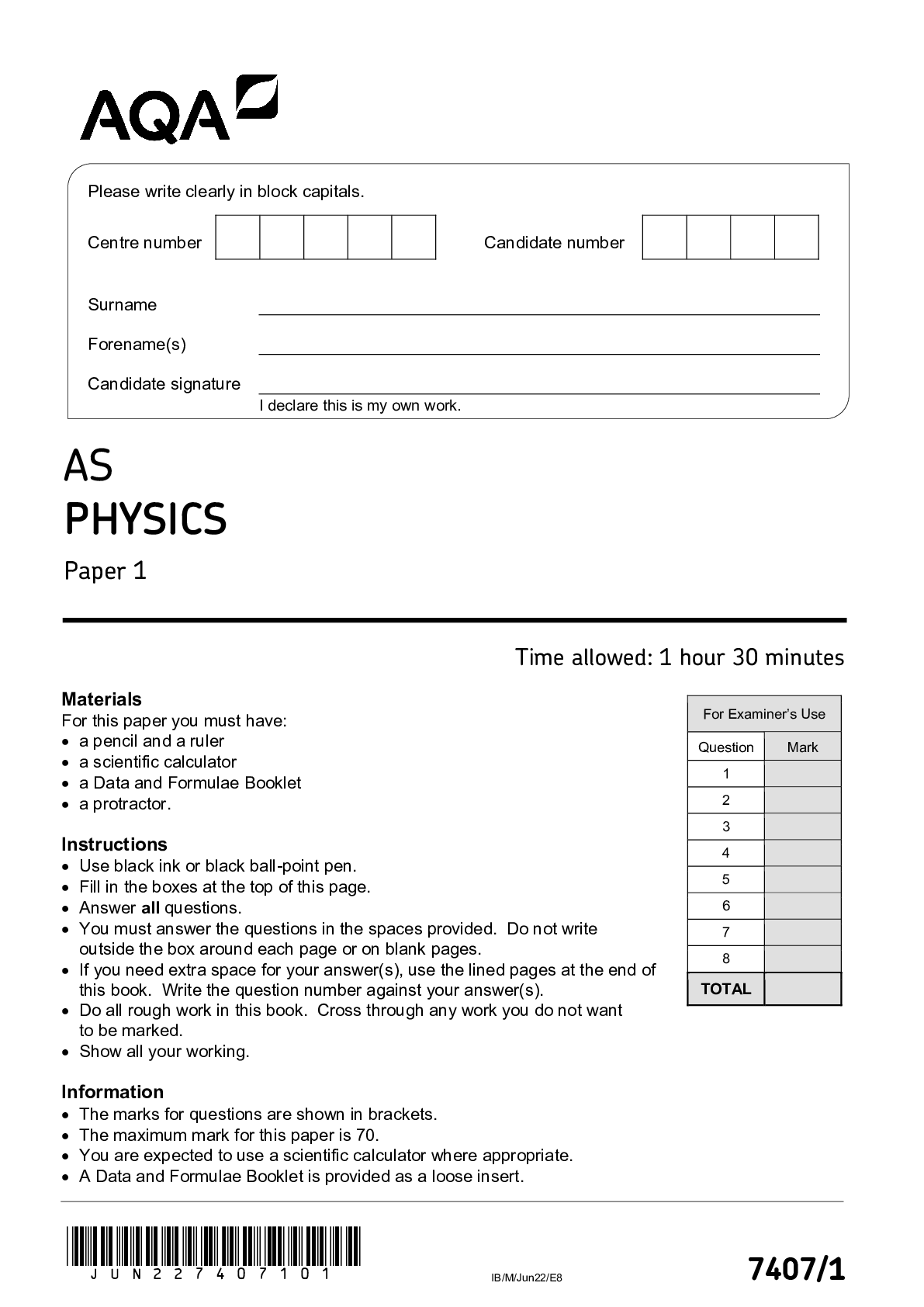
Buy this document to get the full access instantly
Instant Download Access after purchase
Buy NowInstant download
We Accept:

Reviews( 0 )
$8.00
Can't find what you want? Try our AI powered Search
Document information
Connected school, study & course
About the document
Uploaded On
Apr 01, 2023
Number of pages
28
Written in
All
Additional information
This document has been written for:
Uploaded
Apr 01, 2023
Downloads
0
Views
137

